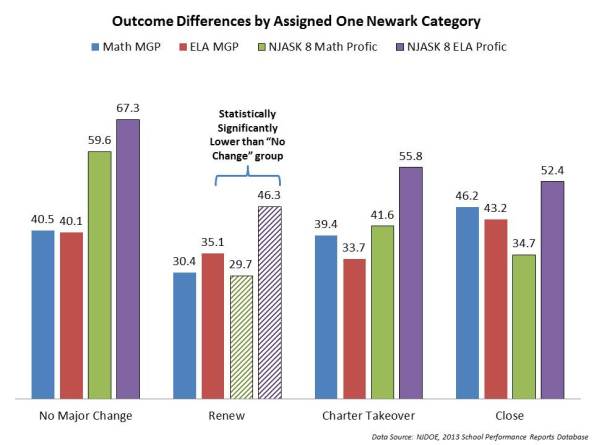What do our One Newark Reports tell us?
Posted on March 9, 2014

My doctoral student Mark Weber and I have just completed our second report evaluating the impact of the proposed One Newark plan on Newark schools, teachers and the students they serve. In this post, I will try to provide a condensed summary of our findings and the connections between the two reports.
In our first report, we evaluated the statistical bases for the placement of Newark district schools into various categories of consequences. Those categories are as follows:
- No Major Change: Neither the staff nor students will experience a major restructuring. While some schools may be resited, there will otherwise be little impact on the school. We have classified many of the schools slated for redesign in this category, as there appears to be no substantial change in the student body, the staff, or the mission of the school in NPS documents; however, we recognize that this may change as One Newark is implemented, and that some of these schools may eventually belong in different categories.
- Renew: As staff will have to reapply for their positions, students may see a large change in personnel. The governance of the school may change in other ways.
- Charter Takeover: While students are given “priority” if they choose to apply to the charter, there appears to be no guarantee they will be accepted.
- Close: We consider a school “closed” when it ceases to function in its current form, its building is being divested or repurposed, and it is not being taken over by a charter operator.
- Unknown: The “One Newark” documents published by NPS are ambiguous about the fate of the school.
We evaluated the extent to which schools, by these classifications differed in terms of a) performance measures, b) student population characteristics and c) facilities indicators. We also
